#sonic boom show
Note
Sonic and Shadow never really wanted to admit that they liked each other, especially to their crush's face, but that went flying out the window when Sonic took one of Shadow's threats during their sparring sessions as flirting, and he went for it.
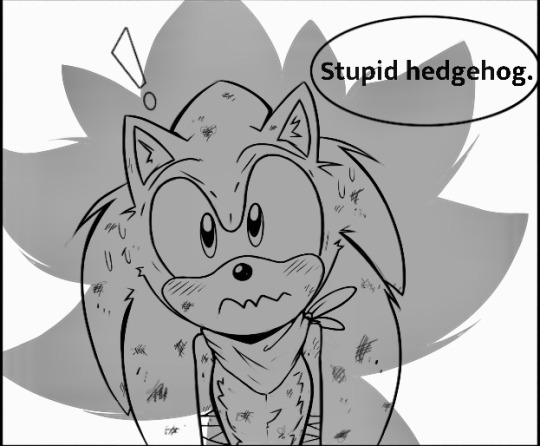
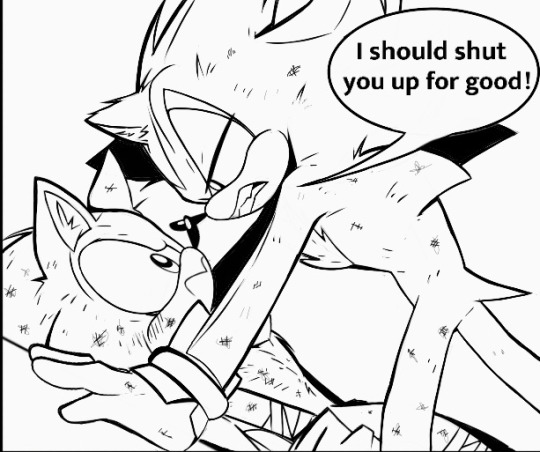


Sonic got gut punched immediately after.
#0.5 seconds of heaven though#this scenario seemed very sonic boom to me#I’ve also never drawn boom style before can you tell lol#sorry this took so long too#thanks for the ask#sonic the hedgehog#shadow the hedgehog#sonadow#sonic boom#sonic boom show#digital artist#digital art#sonic#my art shit#sonic tag#sth#sonic x shadow#sonic art#my art#drawing#art on tumblr#art#sonic fanart#glitch asks#thanks for the ask!#asks#answerd asks
2K notes
·
View notes
Text
boom fire and ice is hilarious actually. the detailed cutscenes literally just look like the show
#sonic boom#sonic boom fire and ice#sonic the hedgehog#sonic fandom#amy rose#tails the fox#dr eggman#sonic boom show
991 notes
·
View notes
Text
Sonic Boom: Shadow is the second most popular character, so we'll use him just a few times in the show- but only at the end episodes, to keep people wanting more. We can make him important too, he gets to be part of a two part episode, and his being here can be the closest thing to a plot in this episodic comedy show.
Sonic Prime: Shadow is the second most popular character, so we'll queerbait Sonadow and do nothing else with him
295 notes
·
View notes
Text
In Boom-verse, Sonic, Tails and Knuckles have a system for checking if something they came up with to pass time will be fun or not
If it's Amy Approved, it's no fun
If it isn't Amy Approved, it's guaranteed to be the most fun idea ever and they'll unanimously decide to go along with it
#sonic the hedgehog#sonic#sth#miles tails prower#knuckles the echidna#sonic boom#amy rose#boom sonic#boom knuckles#boom tails#boom amy#sonic boom show
71 notes
·
View notes
Text



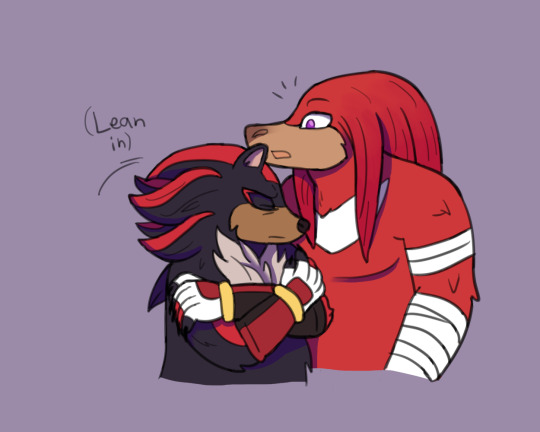
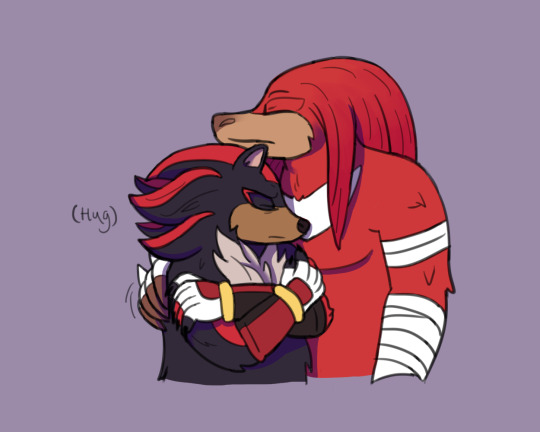
[Image Description is in alt text]. Knuckles comforts Shadow... Based on this post's Knuxadow prompt (link to post here)!
Edit, april 2024: added shading, made Knux's nose color into a gradient and fixed his chest.


#sth#sth fanart#knuckles the echidna#shadow the hedgehog#boom!knuckles#sonic boom the rise of lyric#boom!shadow#sonic boom show#knuxadow#shadnux#mine#boom!knuxadow#image description in alt#image described#art described#art description in alt
74 notes
·
View notes
Text
Error. Error. Error.
Does not compute.
Who are you, Cyborg Sonic?

#sonic boom#sonic boom tv#sonic boom show#cyborg sonic#cyborg boom sonic#does ANYONE remember him?#don’t let me take him to my grave#Cyborg Sonic Followers come to me#haha angst#existential crisis anyway-
29 notes
·
View notes
Text
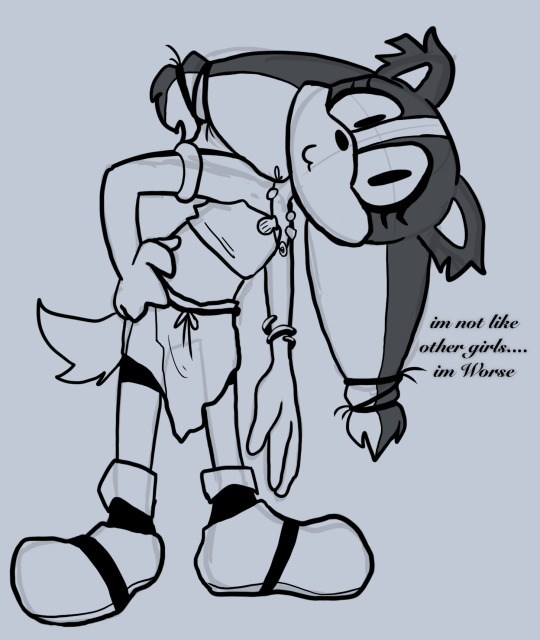
the badge
#i should be asleep#sonic the hedgehog#sth#sonic#sticks the badger#sonic boom#sonic boom show#my art
19 notes
·
View notes
Text
My favorite gag in the Sonic Boom show is when there's an awkward silence that lasts for longer than you'd expect
In most shows the awkward silences aren't funny but in Sonic Boom it's just for a bit too long and it gets me every time
15 notes
·
View notes
Text
I just thought of a whole ass sonic boom:rise of lyric rewrite and I’m pissed, does anyone wanna hear about it? Plz?
#sonic the hedgehog#sonic#sonic boom#sonic boom rise of lyric#sonic boom show#maybe? more like rewrite some parts of the show that has to do with the game rewrite i have#guys plz it’s rotting my brain#like— sonic boom as a concept was a missed potential#not from the studio ik they did what they can#but from SEGA specifically#and probably give sonic boom show a third season shadow-centric#And give shadow team dark too he deserves his family#zumbie talk
9 notes
·
View notes
Text

Why does he have so many jammies
10 notes
·
View notes
Text

Stretch or risk the pulled muscle
#i got nothing right now so boom some boom for ya#wanted to put something out so meh#i also like drawing boom#sonic the hedgehog#shadow the hedgehog#sonadow#sonic#sth#sonic boom show#sonic boom#sonadow boom#digital artist#digital art#my art shit#my art#artist on tumblr#sonic art#sonic tag#sonic fanart#art#digital drawing
670 notes
·
View notes
Text
adhd vs. autism
#sonic the hedgehog#sth#sonic#sonic boom#sonic boom show#miles tails prower#sonic and tails#unbreakable bond
73 notes
·
View notes
Text
nononononononononononono sonic boom is not ten years old no it's not nuh uh
30 notes
·
View notes
Text
On this day ten years ago, in a glitzy media space in New York, the world was introduced to Sonic Boom, a brand new branch of the long-running Sonic the Hedgehog franchise. With branded games, comics, cartoons, many merchandising and licensing deals and a lot of marketing budget behind it, this was intended to be an all-encompassing cross-media initiative that sought to revitalise the blue blur for a new generation of kids.
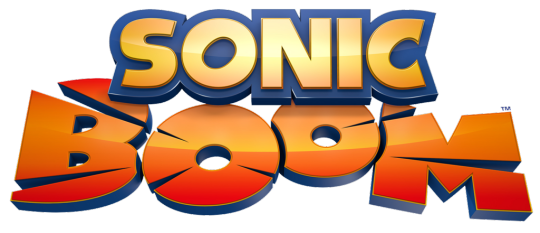
The 6 Feb 2014 event was billed as a “renaissance” that would kick off the “Year of Sonic” - but instead it would become the day that marked the beginning of a long, lost decade for the franchise.
The colossal failure of Wii U exclusive ‘Rise of Lyric’ left fans with next-to-nothing to play for several years, as SEGA scrambled to rescue its most-treasured IP with rushed projects and outsourced works that leant heavily on the brand’s “legacy” - something that the company had just tried so desperately to move away from.
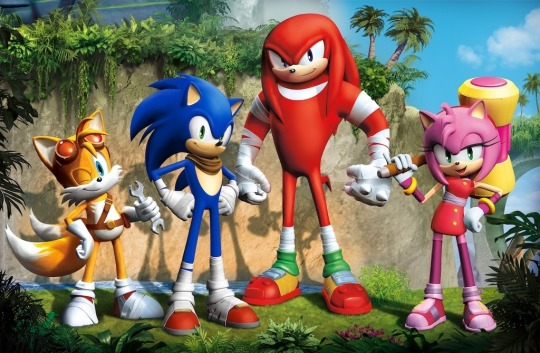
But, we’re getting ahead of ourselves here. At this time, ten years ago, there was no such panic within SEGA, and not nearly as much consternation from the fanbase. The community reaction, in fact, was one of stunned curiosity. The reveal of Sonic Boom was incredibly surprising at the time - not least because of the unique redesigns that Sonic and friends were rocking. Sonic, Tails, Knuckles and Amy all came with brand new kicks and accessories (including an industrial amount of sports tape), and proportions were tweaked to varying degrees (Sonic got taller, while Knuckles got… bigger? In the… chest?) in order to make them look contemporary for a Western (read: US) audience.
Also fascinating was the gung-ho effort by SEGA America to fully commit to a trans-media offering for the Sonic franchise. The blue blur has made - and will continue to make - appearances across all manner of different media, obviously, but Sonic Boom would be the first time that a consistent universe would carry across branded games, comics, TV and potentially even movies.

US developers Big Red Button and Sanzaru Games were tapped by SEGA to develop the first set of video games in this new world, and no expense was spared in getting these projects off the ground - with headliner ‘Rise of Lyric’ reportedly assigned some $20 million in budget. While fans were having a time trying to adjust to this bold new direction for the franchise, it at least could be said that the Wii U exclusive was looking incredibly good in its initial reveal, with the game reportedly running a version of CryEngine 3 specifically made for Nintendo’s cursed console.
On the very same day, a trailer for a branded TV series was also revealed (and it would be this arm of the sub-franchise that would ultimately stand the test of time, with a successful comedy angle for the show and writing that got increasingly great [and weird] across the two seasons that followed) as well as a range of tie-in merchandise in partnership with TOMY. Indeed, Sonic Boom was ripe for the licensing, with SEGA America fully intending to rightfully milk that cow until the end of time with many, many more partnerships confirmed over the course of the next year.
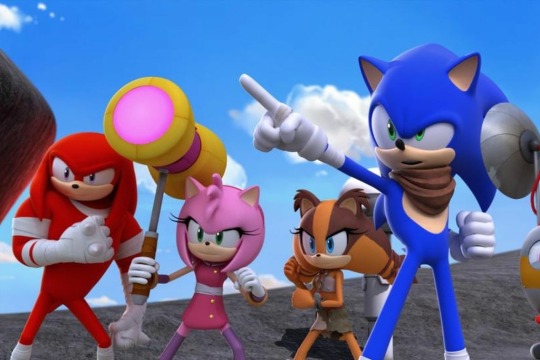
Of course, as we all know now, during the rather chaotic year that was 2014 things started to quickly fall apart. Impressions of Rise of Lyric at E3 were not super positive, with the realisation that Sonic’s design wasn’t the only factor where Boom had deviated from its SEGASonic (or “legacy”) counterpart. Gameplay appeared to follow a rather generic ‘Western action-platformer’ formula, with weird ‘Enerbeam’ swinging gimmicks in place of a traditional Sonic moveset and a focus on character-swapping and puzzles over high-speed action. It later transpired that the Wii U was not quite powerful enough to onboard the aforementioned CryEngine 3 tech either, so graphics and game features ended up taking a nosedive over the months leading up to release.
The game, which was a key factor in Sonic Boom’s overall brand success, crashed and burned by the time the review embargoes lifted (you can read our review on our archive site here, but other media outlets were much less kind to it). Add to that an associated title on Nintendo 3DS, ‘Shattered Crystal’, that suffered similar negative feedback, and you had a verified disaster in the midst of a new IP’s flagship year. The fallout was so bad that in the fiscal quarter that followed, SEGA sheepishly reported to investors that the Sonic Boom games were among the worst-selling Sonic titles in the entire franchise’s history.

Unfortunately, once the games themselves proved to be duds, the rest of the cross-media initiative came crumbling down. An Archie Comics book was announced in July 2014, and ran for only eleven issues before being cancelled. The toys would continue for a little while longer - likely owing to licensing contractual obligations - but it never reached the heights that SEGA America intended, with in-store concepts discovered in 2015 that suggested a complete Sonic takeover of toy stores had the Sonic Boom series become successful.
About the only thing that remained by the end of it all was the Sonic Boom CG animated series, which was beloved by the community and won itself a second season before its time was up. That premiered in late 2016, alongside the third and final video game in the Sonic Boom franchise (if you don’t count the branded Sonic Dash sequel that SEGA HARDlight released a year prior), titled “Fire & Ice” (which itself was delayed a full year from its original intended release of 2015).
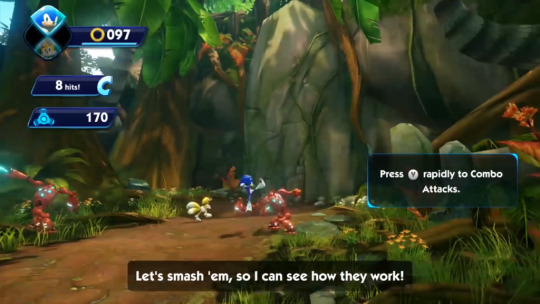
It was a sad run for an ambitious “sub-franchise”. But, while SEGA reps went to great lengths back in 2014 to insist that Sonic Boom was not intended to ‘replace’ the old Sonic continuity, there were signs that in practice this may not have been entirely true. For the three years that followed, the Sonic Team studio took a back seat from practically all association with Sonic the Hedgehog, with its release schedule limited to mobile spinoff Sonic Runners (which, while interesting, only lasted a year with SEGA calling the project a total failure).
The lack of any viable options from the “other branches” of the Sonic franchise, coupled with the share of voice Sonic Boom enjoyed, meant that SEGA America’s pet project was inevitably the de-facto “new face” of the IP, despite comments to the contrary. In reality, Sonic Boom was not just “a new direction” as told by producer Stephen Frost, but “the new direction”, with non-Sonic Boom branches openly considered as part of the franchise's “heritage” instead.
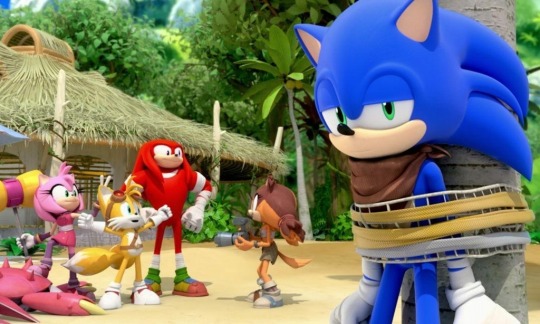
Perhaps most telling of this point of view came from comments made by then-SEGA producer Omar Woodley back in mid-2015:
Quote
"Sonic Boom is meant to branch away from the classic/legacy Sonic. Our plan is to go forward with both the modern Sonic and the legacy Sonic, but the Sonic Team will handle the legacy side of things in Japan.”

Indeed, until 2017 if you weren’t interested in Sonic Boom there was simply nothing interesting to play. In the gaming world, Sonic was in the doldrums. In fact, for years the Sonic social media team had the unenviable task of carrying the entire marketing for the brand, distracting a bored community with nothing but memes (a frankly herculean task that was nonetheless executed so masterfully that the Twitter account ended up growing to millions of followers) until SEGA could action a fallback strategy.
The focus on Sonic Boom (along with the subsequent lack of high profile Sonic Team projects in tandem) and its resulting failure led to SEGA America taking the unfortunate decision to downsize, restructure and relocate its Western business, and the company did not showcase or announce any new titles at E3 in 2015.
Later that year, SEGA Games CEO Haruki Satomi even stated that the company had "betrayed" its fans:
Quote
“We did our best to build a relationship of mutual trust with older fans of Sega, but looking back, there’ve been some titles that have partially betrayed that [trust] in the past 10 years.”
SEGA Europe’s Jon Rooke added that; “SEGA has publicly apologised to the fans as the quality of console games in the Sonic franchise hasn’t been acceptable over recent years.” Whatever was going on, it clearly seemed that SEGA felt like it needed to engage in damage control.

In 2016, Takashi Iizuka spoke up about the future of the franchise, and talked up the possibility of Sonic Team making a comeback.
Quote
“Because [Rise of Lyric] tried a different take on Sonic from the norm — and considering the results — this made Sonic Team feel that we want to build a Sonic title which represents the evolution of the Sonic series over the last 20 years.”
The years that followed brought us Sonic Forces - which despite a reported long development time gave the impression that it was rushed to fill a void left by the collapse of Sonic Boom - and Sonic Mania, a critically-acclaimed title that in spite of its honors was a project outsourced to indie developers.
Arguably, it would not be until 2020 - six years after the announcement of Sonic Boom - that the Sonic franchise would start to pick itself back up. The advent of the surprisingly-fantastic Sonic the Hedgehog feature film from Paramount Pictures restored a lot of energy and good will for the IP and within the community, and ironically brought Sonic to the new and extended audiences that SEGA America originally intended to reach with Sonic Boom.
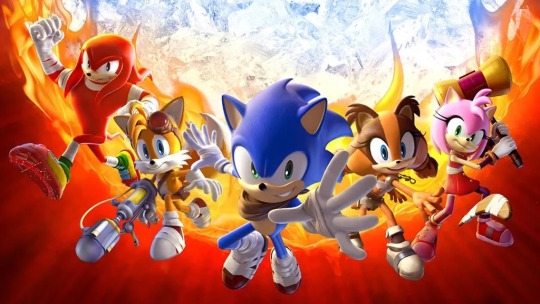
In 2022, nearly nine years on from the New York reveal, Sonic Team returned to the fore with a new concept in Sonic Frontiers. And the consensus on this seems to be that, while it is rough around the edges, its approach has great potential and could flourish in a follow-up with the right design direction.
It truly feels that now, a full ten years on - and thanks to a lot of hard work from SEGA, Sonic Team and the Sonic Brand team - there is a lot to be positive about with this franchise, with plenty of interesting and exciting new games and projects on the way.
But with all that said, is it right to say that Sonic Boom was a complete and total failure? No, I don’t think so. For all of its faults, the sub-brand did do a number of things right. For one thing, the Sonic Boom cartoon remains a favourite for many this day, with fans often mourning the casual and quiet non-renewal of the series. Producer Stephen Frost also concluded that Sonic Boom in general was a success from a licensing and brand awareness perspective, which cannot really be argued when you remember the long-lasting line of toys and merchandise that kept Sonic in the mainstream’s consciousness.
And it was ahead of its time in terms of helping SEGA understand Sonic’s prominence in the West as opposed to Japan, with Iizuka moving to the US in 2016 and establishing the Sonic Brand team out of SEGA America’s offices, where a good majority of brand decisions are now made.
A lot has been written about how Sonic Boom fared and where it may have gone wrong over the years, but one thing is for certain - its reveal and its ambition was most definitely interesting. How do you feel about the overall series, ten years on? And what are your fondest/"fondest" memories of Sonic Boom?
Happy 10th Anniversary, Sonic Boom (the franchise)!
#sega#sonic the hedgehog#sonic#sonic boom rise of lyric#sonic boom shattered crystal#sonic boom#sonic boom tv show#archie sonic boom#archie sonic#sonic boom fire and ice#boom sonic#sonic stadium#sonic boom season 1#sonic boom season 2#sonic boom show#sega of america#anniversary
3 notes
·
View notes
Text

Ouh yeah ballet au doodle <3... One my of favorite poses despite being made up.
Edit: Knux got his leg workout!!


#boom!ballet au#idk if gotta be specific to boom but its where i started#knuckles the echidna#shadow the hedgehog#boom!shadow#boom!knuckles#boom!shadknux#boom!knuxadow#sonic boom the rise of lyric#sonic boom show#sth#knuxadow#mine#sonic boom
21 notes
·
View notes
Text
Review: Sonic Boom: Shattered Crystal
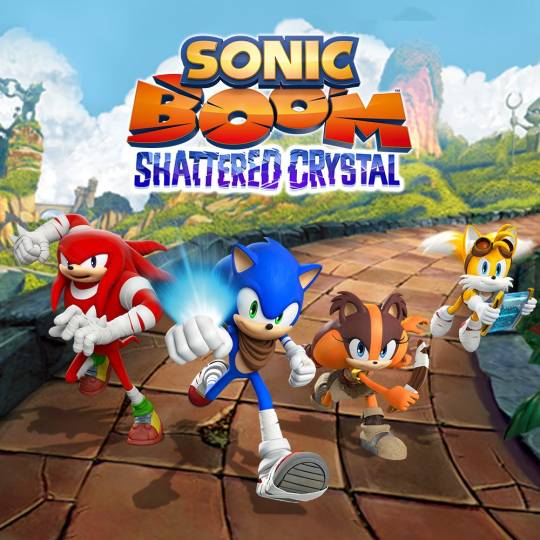
Sanzaru Games • SEGA • 2014 • Nintendo 3DS
Read it on Backloggd: (x)
Sonic's always had a strange, yet interesting history on handhelds.
Its history spans five different developers, from Sonic's birth in 1991 to his 25th anniversary in 2016, with each year marking a gradual change in what the games are even supposed to be for. In the 90s it was Ancient and Aspect, trying to replicate the creative, varied, ball-rolling and feel-good adventures or Sonic 1, 2 and 3, cramming them into tiny 8-bit Game Gear games. While they aren't fantastic or even, good, really, you get a sense that they really tried to capture what people were enjoying about Sonic on the genesis at that point and time, and distilling it into a new format. You see this further with Sonic Pocket Adventure by SNK, a lovely tribute to the Genesis games that gets really close to actually feeling like them despite its 8-bitty visuals, yet feels somewhat restrained by not being much more than just a recreation. From there you get Dimps' Sonic Advance games, now latching onto Sonic's striking new identity after Sonic Adventure: It was still a series about feel-good adventures, of course, but now there was a bit more flair to it all. Sonic in Adventure wasn't just a cool design with a cheeky idle animation, he now had a voice, several fluid animations, strikingly expressive graffitti-esque art, he comments on situations and does cool breakdance tricks after beating levels. Somewhat like the Game Gear games before them, the original Sonic Advance became a game trying to distill the essence of Sonic Adventure, the style, the vibes, even the dramatics in the game's memorable Egg Rocket stage, into a format befitting of a handheld. Advance 2 and 3 are obviously much the same thing but for Sonic Adventure 2 and Sonic Heroes respectively, with Advance 2 channelling the high-octane adrenaline of SA2 levels like Green Forest and Sky Rail into a 2D sidescroller plane, and Advance 3 taking Heroes' team-up mechanics into its own direction.
Yet with Sonic Rush, things began taking a new direction. Not only had there not been a big new Sonic game to try and channel after Heroes, but Dimps had also begun finding their own voice. Sonic Advance 2 had been a monumental triumph in terms of both sales and reviews, and its bold adaptation of 3D gameplay into 2D gave Dimps a somewhat unique basis to build off of – to make Sonic games entirely their own. Even when SEGA would try to reel this back after 2008, instead only having them work on games specifically branded as derivative of others, Dimps now took these games on with a distinctly their-own approach, seen in games like Sonic Colors DS, Sonic Lost World 3DS, and most infamously Sonic 4. In short, Sonic's handheld games had gone from cute imitations, to games driven by their source, to full on original games, to original games using their source as a baseline.
Which now brings us to our fifth and last, developer, for the final Sonic handheld ventures: Sanzaru Games, and Sonic Boom on 3DS.
Shattered Crystal was always going to be fighting an uphill battle compared to its handheld siblings: Mainly, it had little to no foundation to build off of, with Boom as an entity being made specifically to reinvent the series, in a more Americanized direction. For the big debut home console game, Big Red Button was a great choice for this: Jak & Daxter-ifying Sonic with some of that game's lead developers at the helm, whilst not seeming like a great direction to a lot of Sonic die-hards, at least seemed like a great way to get a solid product out. Thing is, unlike games like Advance and Pocket Adventure, Shattered Crystal didn't have a pre-existing thing to try and replicate: Due to being developed in parallel with Rise of Lyric, Sanzaru didn't have much to work off of beyond a few core concepts for the world, and a general idea of teamwork. On top of this, unlike Big Red Button or even Dimps, Sanzaru were in no way known for their excellence in 2D game design, or even known as good developers in general. And so, in a way, Shattered Crystal ended up a hodgepodge of all the different eras of handheld games, trying to both share the brand identity of its console counterpart, yet also be its own thing, but still building its foundations off of some core ideas from the main game, althewhile being fertile ground for the games' developers to grow and learn.
I wanted to give that rundown both because I find it incredibly fascinating to think about, but also because it makes the end product of Shattered Crystal make a lot more sense. Its a messy little game, filled both with ambition to be like what handheld Sonic once was, yet also embrace elements of the 2000s western-made platformers. The game's levels are uncharacteristically large for one, and a lot of the game is focused on exploring them to find collectibles manditory to unlock later levels. The other playable characters, Tails, Knuckles and Sticks, can be switched to on the fly, yet all they really offer is unlocking passageways or access to aforementioned collectibled. Its a very arbitrary inclusion of multiple playable characters, and it combined with gargantuan levels you're forced to explore could have very well ruined the game to be as bland and boring as its Wii U counterpart. So its a good thing, then, that they somehow managed to make Sonic himself feel absolutely fantastic to control. I'm serious: I have no clue how they did it, but Sonic controls like such a dream and has so many movement options, yet remains at a comfortable enough speed to make exploring levels still feasible compared to Dimps' best outings. Its a distinct feel to the character, yet immensely fun to play around with, mainly due to the fun interplay between the airdash and double jump.
To break it down, at any point in midair Sonic can dash either to his sides or straight up, after which he regains his double jump if it was used before. After a double jump he can airdash one additional time, but not in the same direction as the previous airdash, and this repeats until you've airdashed in all directions. What this means is that you can get crazy airtime by doing all of these interlinked airdashes and double jumps correctly, giving you more distance than Tails' flight in most instances the game wants you to switch to him. Jump, doublejump, airdash forward, doublejump, airdash up, doublejump...its reminiscent of those cool strings of moves you execute for long jumps in Mario Odyssey, only far more compelling due to being attached to get-to-the-goal speedrunning stages that still have a lot of options on how to best progress through them. What this means is that when the level asks you to switch to Knuckles to tunnel up a steep cliff, or switch to Tails to cruise over a bed of spikes, and so on, you can almost always execute it faster and more satisfyingly through mastery of Sonics controls. Add to this the fact that the doublejump maintains all of your speed, and the fun Enerbeam that has some really satisfying swinging physics, and you get some levels with some genuinely great flow to them. It takes a similar formula to the Wisps in the mainline Sonic games, switching to far simpler playstyles to clear very specific-to-them challenges, and instead gives you the tools to completely skip them if you're skilled enough with Sonic.
Granted, this doesn't always hold water, and the rushed nature of the game does sometimes catch up to it. Sticks exists to hit switches with her boomerang and she is the ONLY one who can do so, meaning there will inevitably be sections like the start of Scrapyard Zone where you're arbitrarily required to use her. The collectible grind can also halt your flow a lot of the time, like with the strangely out of place Tails Submarine levels where you play a slow and boring diving minigame for 2 minutes each in the middle of an otherwise fast paced game. Or rather, its a game where you can otherwise MAKE the pace faster than it in reality wants to be.
And thats just what makes Shattered Crystal so interesting. Despite everything, it holds on to so many things that makes Sonic games so fun to play, like fast movement, levels you can explore for both items and shortcuts, hell they've even got Richard Jacques – composer of Sonic R and Sonic 3D Blast – doing the music, and its often quite good! The levels themselves are super cool in theming, mostly thanks to each level having a "foreground" and "background", putting new spins on the same level theme sort of like how Sonic Heroes handles its levels. In Shadow Canyons, for instance, you go from grinding on rails and running along scaffolding by these big imposing cliffs, to being flung into the mining facility going on in those mountains. I honestly don't want to spoil the final level because it is such a cool theme for a stage with this system, that it makes the entire game feel worth it just to get to.
Because at the end of the day, for as much cool stuff there is in Shattered Crystal, for as close as it really does come to being a successor to Dimps' handheld lineage, the game is sadly just too much of a chore to get through normally. Unlike a game like Sonic Colors, the explorative nature of the stages isn't just there for optional unlockables, but rather required for progression and beating the game. By the end, you will more or less need a 90% completion rate, meaning most stages need to be both combed through but also beaten with above 50 rings and under a specific time. Its not that this stuff is bad or unfun to do, the game has a super detailed map on the touchscreen showing you where you havent been yet and where things are and I actually really like the autorunner extra stages you can do inbetween levels. It's moreso that it leads to the game feeling at odds with itself: Its immensely fun to speedrun and try to go faster in, but so much of the game wants you to instead do the fun-but-not-nearly-AS-fun collectible hunt. Then, you add that with how the controls can start to really hurt your hands after a while: There's no D-pad movement, meaning you need to slam a somewhat-flimsy circle pad as far to the left or right as it can go to move quickly, whilst also holding down Y at all times to run, whilst also asking you to be ready to use B to jump and A or X to airdash and enerbeam...
It all adds up to Shattered Crystal being a game with truckloads of potential to be amazing, that holds itself back both due to a rushed development and a need for surface-level parity with the slow-as-molasses home console Sonic Boom game it has no business associating with. But when you're able to overcome all those restrictions, when there's no longer a need to collect things, when you've mastered Sonics controls to almost never need to switch to the other bozos, and when you get a true flow going with mechanics you would never expect to be so fun for what the game looks to be on the surface...
That's when you've broken free. Because trouble keeps you running faster.
Playtime: 20 Hours
Key Word: Shackled
#melloggd : reviews#game reviews#video games#video game review#game writing#sonic#sonic the hedgehog#sonic boom#sonic games#sonic music#sonic boom show#sonic boom shattered crystal#miles tails prower#tails the fox#knuckles the echidna#amy rose#sticks the badger#dimps#sanzaru games
6 notes
·
View notes